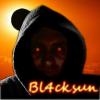
Posted
As I continue to contemplate my (eventual) purchase of Synfire, I regularly check for updates, tutorials and music created with Synfire. While I do think that Synfire is a powerful tool, I continue to be less than impressed by the results that I see. It seems to me that a majority of the music that is produced seems like "computer music." I have deliberated long and hard on why this is, and whether I would be able to utilize the product better than others.
Most of the music I hear that is produced by Synfire seems rhythmically confused. I expect this is the result of lazyness on the composers part and the complexity of Synfire and (tentatively) lack of documentation on Synfire's more intricate aspects. I imagine many Synfire users do not take an appropriate amount of time to make sure their phrases are rhythmically sensical with the rest of the composition. Because of Synfire ability to make any imported musical content harmonically relevant, it seems that rhythm often comes as a second thought.
The suggestion I propose, which I think will make Synfire a more powerful program, is to value rhythm as highly as harmony. Perhaps to have a rhythm master track, much like the harmony one, for sections. This could be a programmed groove or an imported one. It would ensure that harmonically consonant material appeared in rhythmically important places and that pasing tones fell between these. Users could have the ability to opt out of the gravitational draw of the master rhythmic groove much like the "weak" option for harmony, in order to create more complicated rhythms and accents. The groove would adjust phrases by either adjusting the duration of notes or the position of the phrase within the bar. Synfire does a great job of ensuring that any musical material is harmonically relevant at any point in time by use of the master harmony track, I think that if it did the same for rhythm that the result would be much more compelling and human in nature.
I know that some users are quick to defend Synfire and to point out ways that this can be accomplished within the program. I think that any such input would be well appreciated by myself and others that would like to incorporate these suggestions into their current workflow. But I hope that Andre will consider this suggestion seriously in order to improve the program. I continually hope for Synfire's success and fantasize about the day that I'll be able to (afford it and) incorporate it into my compositional workflow. I think that this feature would obliterate Synfire's weakest link and be further encouragment to me to finally bite the financial bullet.
thanks for reading
Wed, 2012-06-20 - 08:52 Permalink
Hi adonis,
I'm not an expert by any means on synfire so have to agree with you somewhat. There is a Quantasise function and you can also copy rythem from fron instrument to another, which is something I've started to do more frequently. I do miss though something like you describe and also a way to impart some groove. Most of the time I do this in ableton once I've exported the semi finished track.
Maybe I'm missing something and just need another great video to watch? I'll see wha other comments are forth coming.
Wed, 2012-06-20 - 11:04 Permalink
I'm glad you bring this up. Thanks for taking the time to share your thoughts. We much appreciate it, because this is indeed a topic that deserves more attention.
I imagine many Synfire users do not take an appropriate amount of time to make sure their phrases are rhythmically sensical with the rest of the composition. Because of Synfire ability to make any imported musical content harmonically relevant, it seems that rhythm often comes as a second thought.
Absolutely, yes. It's a matter of training and experience.
Most of the music I hear that is produced by Synfire seems rhythmically confused.
You can not blame the typewriter for the novel.
It seems to me that a majority of the music that is produced seems like "computer music."
If by computer music you mean electronic music with binary rhythm, this is largely due to the demography of the Internet population (users are reaching us exclusively online - no marketing yet). The majority of people on the net making music today have started doing so using loop-based software. Hence the huge success of Ableton. Many of them never played an instrument, dealt with melody, wrote a song, or played in a band. However, the more you get into the language of music, there is a growing desire to expand on your expressive capabilities. Synfire is a great tool to support that. However, this will not happen overnight.
One other aspect to consider is that most songwriters and composers are rather concerned about (or not allowed) making their work publicly available.
Ensuring a sufficient variety of music examples and tutorials is somewhat a burden on my shoulders currently. Synfire will not be perceived as what it actually is until we are through with this. Stay tuned.
Now for your proposal.
The current parameters support groove quantization (Rhythm), humanization and accentuation (Shift, Velocity) and sequential relocation of notes (Step, Length). While the latter can introduce radical changes, these tools are rather for phrase postprocessing than phrase creation.
The idea of a rhythm master track seems tempting, although rhythm is a challenge. It is physcial motion perceived by they way how multiple instruments (or voices) interact with each other.
Other than harmony, it is often tied to a specific genre and culture, which makes it difficult to come up with a formula that works for all styles. Ska, Funk, R&B, Hip Hop, Drum&Bass, Dubstep, 70's Disco, Latin, Tango, Reggae, Blues, Folk … heck, you can instantly recognize all of these solely by a short drum loop. Even if one creates a new style, it will be perceived as a variant of an existing one. Since you can most easily get any imaginable drum pattern from the countless libraries and generators that already exist, there is no need to reinvent the wheel.
So what really implements rhythm is the phrases, as you correctly pointed out. The room for modifying existing (recorded) phrases to match a largely different groove is very narrow and quickly destroys the human feel. At best, the results would be unpredictable. The Rhythm parameter does a good job in quantization, although it can not substantially modify your phrases. It can be used to apply the rhythm of one phrase to another (also works with Step parameter).
There is more room for generating new phrases from scratch. This however is a different feature that we could talk about.
I'd love to start a Ryhthm discussion in the workflow forums to encourage everyone to pay more attention to it.
Wed, 2012-06-20 - 15:53 Permalink
Thanks for your reply,
I would much like to see anyone's input on these ideas, and any solutions they have found.
I think introducing as much human elements (via recording) as possible into Synfire produces a far better result, although this could be said for any midi sequencing.
One feature that I have longed for in a DAW or a program like Synfire is the ability to record rhythmic content after the fact (much like recording automation). One way for the program to analyze this would be to cycle through the pitch values of the phrase (or in Synfire's case the harmonic transposition) while applying the rhythmic value recorded. While this can be somewhat achieved via step input, I think the result leaves something to be desired. Another way the program could interpret this is to keep the pitch values locked to their respective places in the bar (time) and cut, merge, and position the notes start and stop points according to the recorded groove. This would allow one to take any musical content and make it rhythmically applicable to their composition while retaining that essential human element. This is something I long for every time I open a midi sequencer.
I would like to further explore the phrase drawing features in Synfire (As an artist, drawing in the melodic contour of phrases is very appealing to me.). I think that the aforementioned functionality coupled with the draw ability would be a very powerful tool.
Wed, 2012-06-20 - 18:25 Permalink
You can manipulate the rhythm as easily as harmonic activity. Create or import midi drum tracks, out of any Virtual Drum machine,RVX. any other song, Fruity Loops. ToonTracks, BFD, etc.. anywhere. Just use that rhythm and apply to desired tracks.
Also take the rhythmic quality of one SFP track and apply to any other track. Highlight sections where you want to change rhythm and quatize that individual section.
I think people are so taken by the harmonic abilities, the rhythmic has taken a back seat (for a while). It will take several months to master the intricasies of the melodic and harmonic things you can do.. I've made drum rhythm libraries, from various sources, and very freely marry them to the harmonic and melodic content
I would not judge SFP abilities on the few examples you hear here.. Most users are contentrating on the areas that interest them. Again with drum/percussion mdifiles that are freely available off net, if you look, you can create poly shythems, just ny having different tracks with different lenths.
Try it out on the demo itself.
Good luck



